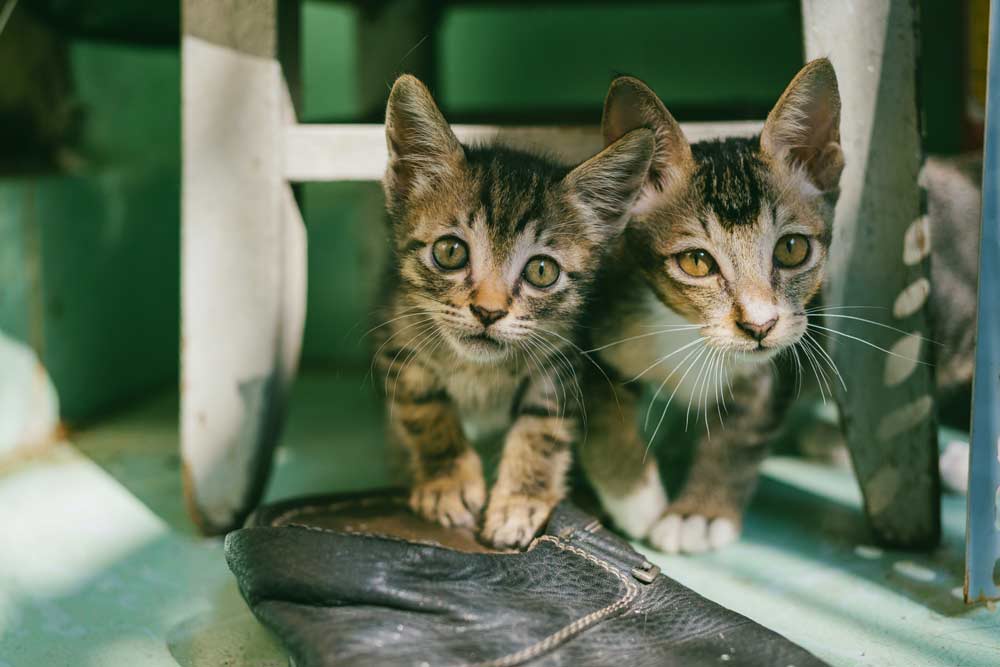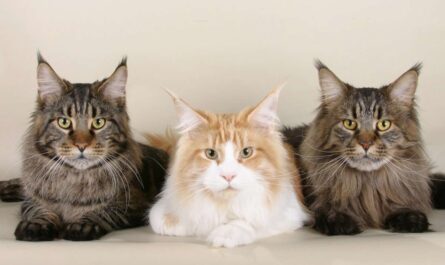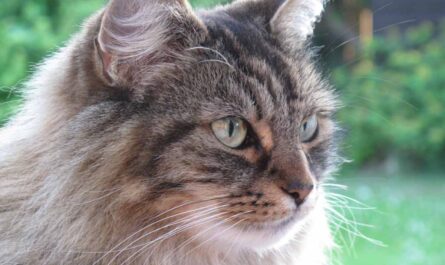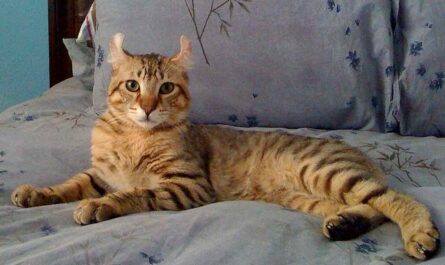There are many ways to learn about a cat. The best way to learn about the cat is to learn from your own experience. However, you can learn about the cat by collecting information and experience from others. In this article, I am going to share my knowledge and experience so that you can learn about a cat. In our perpetual quest for self-improvement, seeking guidance on how to be better, more efficient, and happier, we might find inspiration in observing our feline counterparts. Have you ever noticed the unique aura of nonchalance that cats exude? They seem utterly unaffected by others’ opinions, confidently believing that their existence holds profound meaning and purpose. Every action they undertake appears imbued with significance. Perhaps it’s time for us, the bipeds, to glean a thing or two from the feline kind.
For thousands of years, humans have been captivated by these enigmatic beings, inspiring some to construct awe-inspiring pyramids in their honor. Yet, despite our millennia-long relationship with cats, there remain numerous intriguing feline facts that even the most devoted pet owners likely remain unaware of. Let us embark on an exploration of twenty mind-blowing real facts about cats, offering newfound knowledge to acquaint ourselves better with our furry friends. With their endearing furry coats, comical antics, meow-sterious personalities, and an overwhelming abundance of cuteness, they effortlessly capture our hearts.
Interesting Facts to learn about your cat
As we observe these enigmatic creatures, we realize that valuable lessons can be learned from their approach to life. However, the one exception may be abstaining from gifting headless mice to our loved ones. That particular lesson might not be applicable, but within the rest of their fascinating behavior, a treasure trove of wisdom awaits our exploration. Let’s find below some interesting points in order to learn about a cat!
1. Fascinating Feline Behavior
Contrary to the belief that cats are solitary and lonely beings, a visit to a farm with feline residents reveals that they form colonies, sometimes numbering in the dozens, and even engage in group hunting activities. Harmony reigns among them, as there is typically one dominant cat that is acknowledged by the others. However, this hierarchy may shift when a new cat joins the group, leading to a re-establishment of dominance.
For indoor/outdoor cats, like my own, even with cat doors at their disposal, the desire to venture outdoors remains strong. Each day, my cat eagerly awaits the opportunity to step into the mudroom, patiently anticipating the opening of the next door that leads to the outside world. Occasionally, I accompany him to the back patio, witnessing his delight as he rolls around on the stones and curiously observes his surroundings. Perhaps he longs for a companion in his explorations, one with a touch of stealth and grace, making for an ideal hunting partner.
2. Enigmatic Age Calculation
The popular notion of equating a cat’s age to three human years falls short in accurately gauging their true age. While a one-year-old cat is capable of reproduction and self-care, a three-year-old human is still in the nascent stage of development, utterly reliant on caregivers. The dissimilarity in internal and external changes between cats and humans renders such age conversion methods ineffective.
Interestingly, advances in cat care and genetic modifications have contributed to an increase in feline lifespans. In the past, cats often lived up to around twelve years, but now it’s not uncommon for them to reach eighteen or even beyond. Remarkably, some cats are reaching their twenties, and there are accounts of certain cats living up to thirty or even thirty-four years.
3. The Enigmatic Nature of Cats
The historical mistreatment of cats at the hands of humans has instilled a sense of caution in them and with good reason. Cats have been associated with witchcraft, Satan, and evil throughout various periods in Europe and America. They have endured persecution, condemnation, torture, and mass extermination on numerous occasions. The feline survivors have passed down their DNA and instinctual wariness of humans to subsequent generations.
Despite this troubled past, every cat owner knows the depth of connection and gratitude that cats can develop when shown care and attention. The aloofness often associated with cats gives way to a bond of affection and loyalty between felines and humans.
4. Unlocking the Secrets of Feline Training
While many believe that cats are untrainable, in reality, they can be trained to some extent, depending on the breed and individual cat. A testament to this lies in various cat performances witnessed on television, where cats walk ropes, roll balls, and even swim underwater. The perception of untrainable cats is dispelled by the fascinating accounts of cats and their owners engaging in playful games and interactive activities.
- Cat Scratching Posts for Indoor Cats
- Cat Water Fountain on Amazon
- Cat Carrier on Amazon
- Cat Automatic Feeders on Amazon
In her book, “How To Talk To Your Cat,” Patricia Moyes shares engaging experiences with her cats, highlighting their trainable nature. One of her cats participates in a game where objects are retrieved from precarious perches with utmost care and precision, while the other cat employs a more enthusiastic approach, occasionally resulting in a less graceful retrieval process.
Ms. Moyes also mentions games like fetch and carry and hide and seek, demonstrating how her cats actively participate. The cats retrieve objects thrown by Ms. Moyes and return them, and they even engage in a hide-and-seek activity with enthusiasm. Her intimate and respectful relationship with her cats has nurtured their trainability and mutual understanding.
Indeed, expectations play a significant role in the capabilities of both pets and children. My own cat, adopted as a stray at approximately eight months old, initially displayed a habit of sharpening his claws on the furniture. With firm but patient training, he learned to cease this behavior upon verbal command. His desire for attention and sustenance is evident when he jumps onto the kitchen table, a forbidden area, signaling his need to be fed.
Ancient Egyptian depictions suggest that cats were once trained and utilized, corroborating their trainable nature before the sad times of cat persecution led to a decline in this practice. The image of a cat herding ducks while walking on its hind legs and holding a staff showcases their perceived authority and intelligence in ancient times.
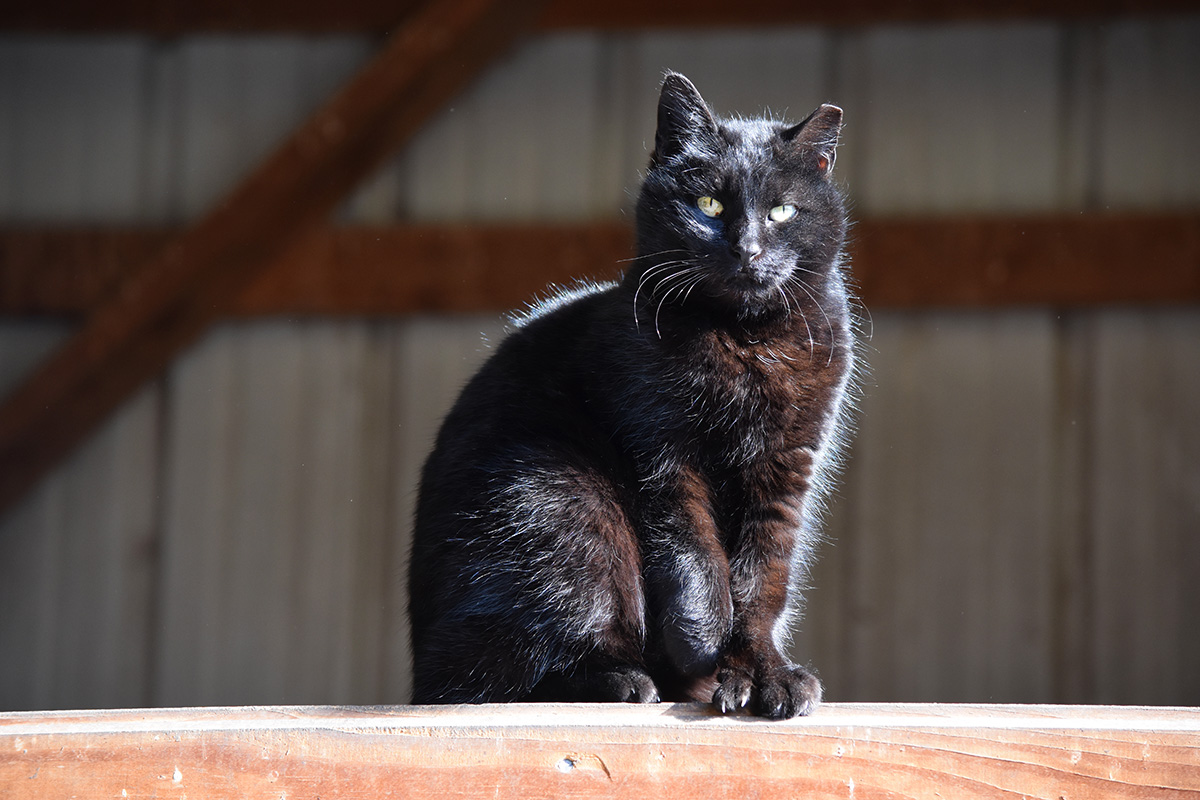
5. Feline and Music: A Harmonious Bond
The enchanting relationship between cats and music is a wonder to behold. When you pick up an instrument and play a gentle tune, such as folk music on a guitar, a dog might choose to vacate the room, seeking solace elsewhere. However, a cat is likely to approach you, captivated by the melodious sounds. My previous cat proved to be my most ardent supporter, especially when I indulged in complex fingerpicking on the guitar. In the presence of the Celtic Harp, my current cat exhibits sheer bliss, as if every note washes over him with overwhelming delight. A mood of euphoria envelops him, as he revels in the profound pleasure that music evokes.
Countless composers throughout history have shared similar experiences with their feline friends. For instance, Mlle Dubuy, a renowned harpist, discovered that her cat would purr contentedly when she played beautifully on her harp but shed tears when her performance fell short. She astutely leveraged this phenomenon to enhance her harp skills, knowing the impact her discerning cat had on her artistic journey.
A remarkable YouTube video showcases a cat playing the piano with intent focus, fully engrossed in the musical phenomenon. When his mistress performs a piece by Bach on another piano, the cat halts and listens intently, appearing to appreciate the musical prowess on display. This cat, like many others, seems to genuinely revel in great music, aspiring to become a musician in its own right.
- Toilet Training Kit for Your Cute Cat On Amazon
- Cat Health Supplies on Amazon
- Cat Food Supplies on Amazon
- Cat behavior Products on Amazon
- Automatic litter box self-cleaning
6. Feline Nutrition: Unraveling the Dry Food Debate
The idea that dry food is sufficient for cats has been subject to debate, with many experts asserting that it is far from true. Cats are obligate carnivores, relying on meat as their primary source of sustenance. Unlike humans and dogs, cats lack the biological capability to synthesize essential proteins from a variety of non-meat diets.
Carbohydrates, in particular, are not natural or necessary for cats and are considered potentially harmful. Instead, cats require meat, preferably in the form of canned food, not only for proteins but also for hydration. Cats have a relatively low thirst drive, as any cat owner can attest. In the wild, their main source of water comes from their prey. Without access to such prey and an inadequate intake of wet food, a cat may quickly suffer from dehydration, leading to renal issues, a problem all too common.
Ensuring a constant supply of fresh water is vital for your feline companion, regardless of whether they consume wet or dry food. Many cat owners have observed that placing the water bowl away from the food bowl encourages cats to drink more water, mimicking their natural behavior of seeking water independently of their quest for food.
Additionally, it is advisable to avoid using plastic bowls for food and water. Plastic can be prone to scratching, providing a breeding ground for harmful bacteria. Moreover, some cats exhibit sensitivity to plastic, experiencing skin problems on their chins when fed and watered from plastic bowls.

7. Cats dedicate half their lives to grooming
Ever wondered why your cat seems perpetually occupied with self-grooming? The answer lies in their fastidious dedication to cleanliness and personal hygiene. Ranking at the pinnacle of self-grooming connoisseurs, an average cat devotes approximately 5 hours each day, constituting a remarkable 50 percent of their waking moments, to meticulous grooming. This routine serves as more than a mere exercise in cleanliness. It plays a crucial role in their lives by keeping them cool, concealing their scent from predators, aiding in parasite control, and even acting as a form of stress relief.
8. Cats’ astonishing jumping prowess
Witnessing cats launch themselves through gravity-defying leaps is a common sight on YouTube cat videos, often inducing bouts of laughter. Their remarkable jumping abilities are a testament to their impressive leg bones and powerful muscles working harmoniously, enabling them to leap up to an astounding SIX TIMES their own length in the blink of an eye.
Cat’s agility is further accentuated by their clever usage of their long tails as balancing aids during these prodigious jumps. With their extraordinary athleticism, they effortlessly conquer towering cupboards, shelves, fish tanks, and even refrigerators, unveiling their prowess in the age-old art of purr-kour!
- Surprise Subscription Boxes for Cool Cat On Amazon
- Build Your Cat Box. 1 Box Every 3 Months
- Litter Boxes for Your Lovely Kitten On Amazon
- Cat Breed Test
9. Cat Brains vs. Dog Brains
A perennial debate ensues between devoted cat and dog owners, each championing the intelligence of their beloved companions. Dogs seemingly boast a higher social IQ, yet our feline friends more than compensate for this deficit with their superior problem-solving acumen and remarkable long-term memory capabilities. A cat’s cerebral cortex, the realm of the brain responsible for problem-solving, planning, language interpretation, decision-making, and memory storage, boasts approximately 300 million neurons, as Psychology Today reveals.
Astonishingly, cats exhibit a remarkable 90% structural similarity with humans, displaying brain complexity exceeding that of dogs, with more than double the number of nerve cells! While the contest of intelligence continues, it may be time for dog lovers to graciously acknowledge the genius within our feline counterparts.
10. Cats’ Astounding Auditory Prowess
While human ears comprise a mere 12 muscles, feline ears boast an impressive 32, granting them an extraordinary hearing advantage. This auditory prowess empowers them to rotate their ears a full 180 degrees, akin to sophisticated satellite dishes, deftly pinpointing even the faintest squeaks and accurately discerning their origins.
Moreover, cats possess an uncanny ability to detect astonishingly high and low frequencies that often elude other animals, including dogs. Hence, it comes as no surprise when you hear the telltale tapping of their paws the instant you open your refrigerator or present a tempting box of treats.
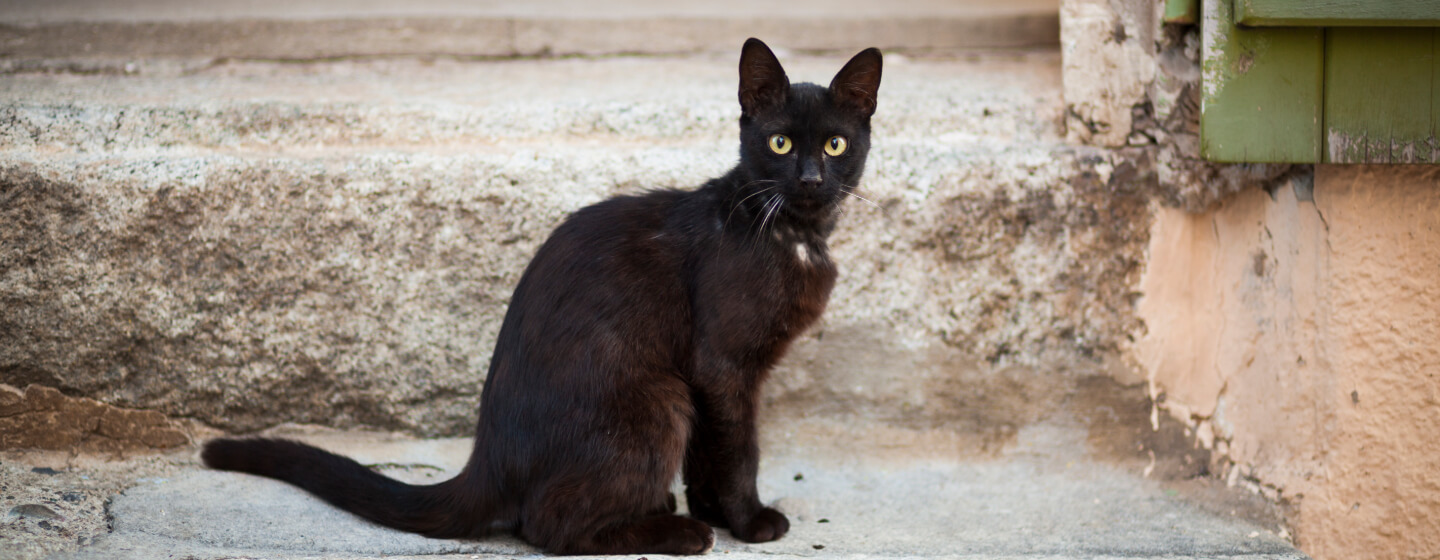
11. The remarkable tale of Dusty, the mother of 420 kittens
In a spectacular feat, an unassuming Tabby cat hailing from Texas, named Dusty, achieved the illustrious Guinness World Record for birthing the most extensive brood of kittens in recorded history. Throughout her breeding life, Dusty managed to deliver an astonishing 420 kittens, culminating in her final litter, consisting of a single kitten, at the venerable age of 18.
12. Cats Master the Art of Ignoring
In the eternal interplay of affection between humans and their pets, dogs often steal the spotlight with their unconditional adoration and unwavering responsiveness to calls. However, delving into the intricate psychology of cats uncovers a more nuanced dynamic. While some cats may seem to relish ignoring our pleas, this should not be misconstrued as a sign of indifference or lack of affection.
On the contrary, cat owners testify to their feline companions being boundless wellsprings of love, compassion, and endearing affection. Studies, too, endorse their capacity for high levels of fondness. A revealing Japanese study suggests that while cats indeed recognize when their names are called, they may choose to feign disinterest and ignore the summons. This fascinating phenomenon owes its origin to the fact that cats, unlike dogs, were not domesticated with a primary focus on responsiveness to humans. Instead, they operate in alignment with their natural instincts, responding only when necessity calls.
- Cat Guide Book on Amazon
- Cat Breed Book on Amazon
- Cat Behavior Book on Amazon
- Cat Training Book on Amazon
13. The striking similarity between cat and human brains
Extensive research reveals an astonishing similarity between the brains of cats and humans, with some estimations reaching up to 90 percent. Both species boast strikingly comparable brain regions responsible for navigating the intricate realm of emotions. These similarities extend to the composition of gray and white matter in the brain, as well as the presence of folds or crevices that facilitate heightened and more intricate brain activity.
Furthermore, designated regions govern complex activities such as movement, eating, and play, shared by both cats and humans. Evidencing the parallel nature of their cognitive processes, cats also possess long and short-term memory, accompanied by a thinking pattern akin to their human companions. This uncanny resemblance raises the intriguing possibility that you and your feline companion may share thoughts, particularly when it comes to the irresistible allure of food.

14. Creme Puff’s Surprising Diet
Feline history once bore witness to a Texan domestic cat named Creme Puff, who etched her name in longevity records by surviving for an astonishing 38 years and 3 days. Born in 1967, Creme Puff enjoyed a unique diet comprising dry cat food supplemented by a culinary assortment encompassing eggs, turkey, bacon, broccoli, coffee, and, remarkably, even a lick of red wine. Intriguingly, Creme Puff’s owner previously boasted another feline companion, a cat who graced this world for an impressive 34 years.
15. Cats and Cardiovascular Health
Beyond their endearing companionship, cat ownership offers a remarkable array of health benefits. Studies illuminate the striking revelation that cat owners stand at a 40 percent reduced risk of heart attacks and a 30 percent lower likelihood of experiencing strokes compared to those without feline companions. Scientists attribute these beneficial effects to the calming presence of cats, which, in turn, lowers blood pressure and heart rate, thus alleviating stress, anxiety, and depression.
- Amazon Best Sellers: Best Cat Breeds
- Cat Products for Indoor Cats
- Cat Toys for Indoor Cats Best Sellers
16. Over 100 Distinct Sounds
While it’s a common misconception that cats communicate solely through purrs, hisses, growls, and meows, these sounds merely scratch the surface of their vocal repertoire. Research unveils a fascinating reality: cats possess a diverse vocal range, capable of producing more than 100 different sounds, thereby boasting one of the broadest arrays of vocalizations among domestic animals.
Tailoring their auditory expressions to reflect their emotional states, circumstances, and the significance of the situation, cats artfully convey emotions such as anger, fear, contentment, and ease. Adorably reserving their cute meows exclusively for human interaction, our feline friends unleash hisses, purrs, and even spit in the presence of other animals, shunning the familiar meow.
17. How Cats Beat the Heat
Observing your cat on a sweltering day may raise questions about their lack of profuse sweating despite their thick fur coat. The answer lies in their evolutionary prowess as desert animals, adept at coping with heat. Surprisingly, cats harbor sweat glands within their foot pads, a revelation detailed in the Cat Owner’s Veterinary Handbook. Hence, when temperatures soar or anxiety mounts, our feline companions deftly secrete sweat through their paws, at times leaving behind delicate trails of wet footprints.
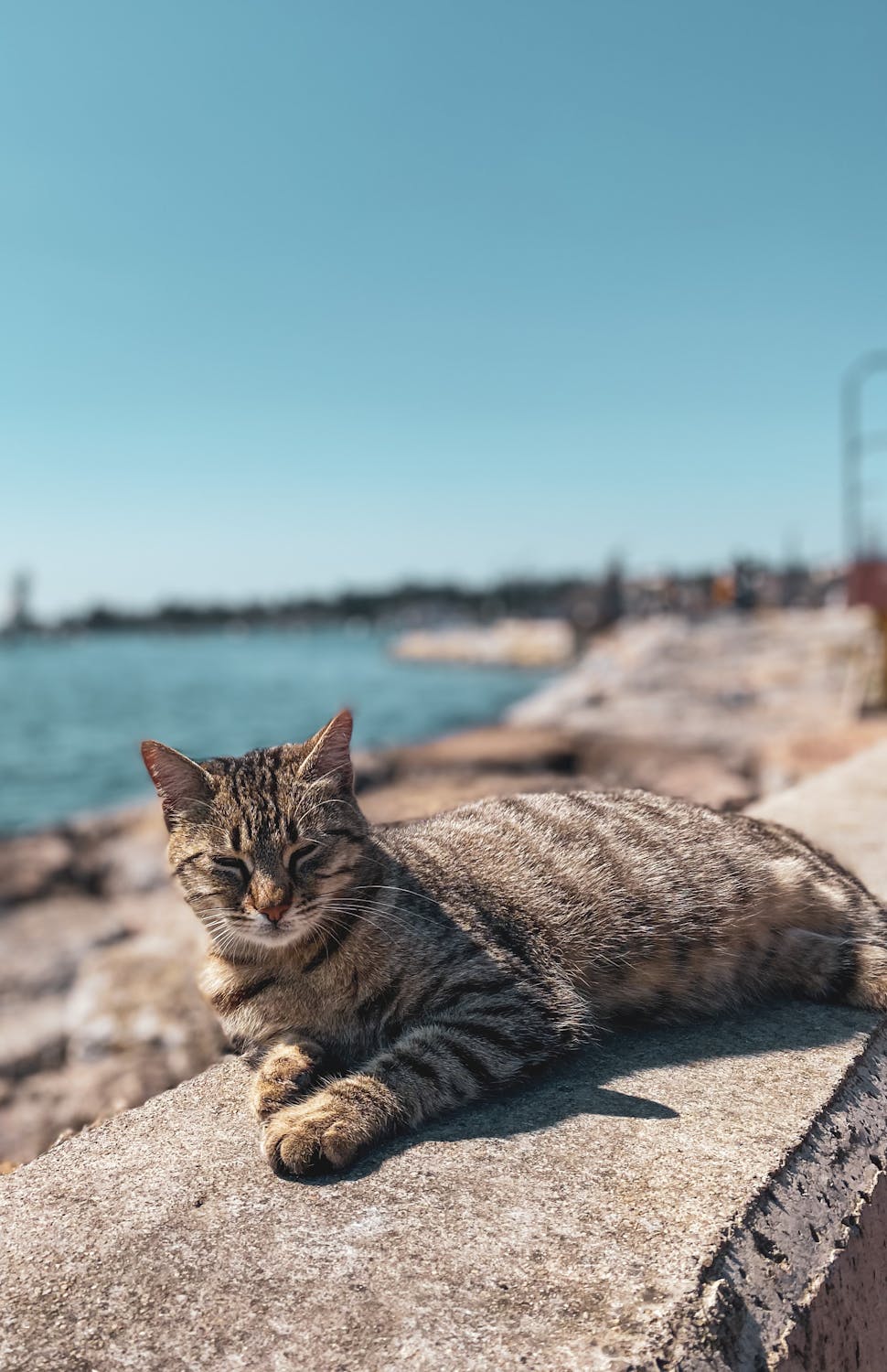
18. Cats Marking Their Territory
Embracing you with affectionate rubs, cats express more than just fondness. Behind these gentle caresses lies a subtle territorial proclamation. As they lovingly rub their foreheads, chins, and cheeks against you or objects, they transfer their distinctive scent from the scent glands nestled in these areas, leaving an olfactory imprint that says, “You belong to me.” This endearing ritual serves as both a reaffirmation of ownership and a heartfelt desire for your undivided attention.
- Amazon Best Sellers: Best Pet Cats
- Amazon Best Sellers: Best Cat Care
- Amazon Best Sellers: Best Cat Care & Health
- The Cat Selector: How to Choose the Right Cat for You
19. Ancient Egypt’s Feline Veneration
Today’s regal cats adorning our pillows trace their revered lineage to ancient Egypt, where they were held sacred and adorned with ornate jewelry, indulging in royal treats. Egyptians deeply revered these enigmatic creatures for their prowess in safeguarding homes from venomous threats like snakes and scorpions. In the event of their passing, cats were bestowed the honor of mummification, and those unfortunate souls responsible for the accidental demise of these esteemed creatures faced a dire fate, often being sentenced to death.
20. Cats Erasing Your Scent
A cat’s self-grooming ritual is a familiar sight, but intriguingly, have you noticed them immediately licking the very spot you’ve recently petted? Rest assured, it’s not a subtle snub. Beyond the realm of hygiene, cats embark on this endeavor to remove your scent and other odors, endeavoring to exude their authentic essence. Moreover, licking serves as a means of self-regulation, assisting them in managing body temperature and calming themselves during moments of embarrassment, anxiety, or inner conflict.
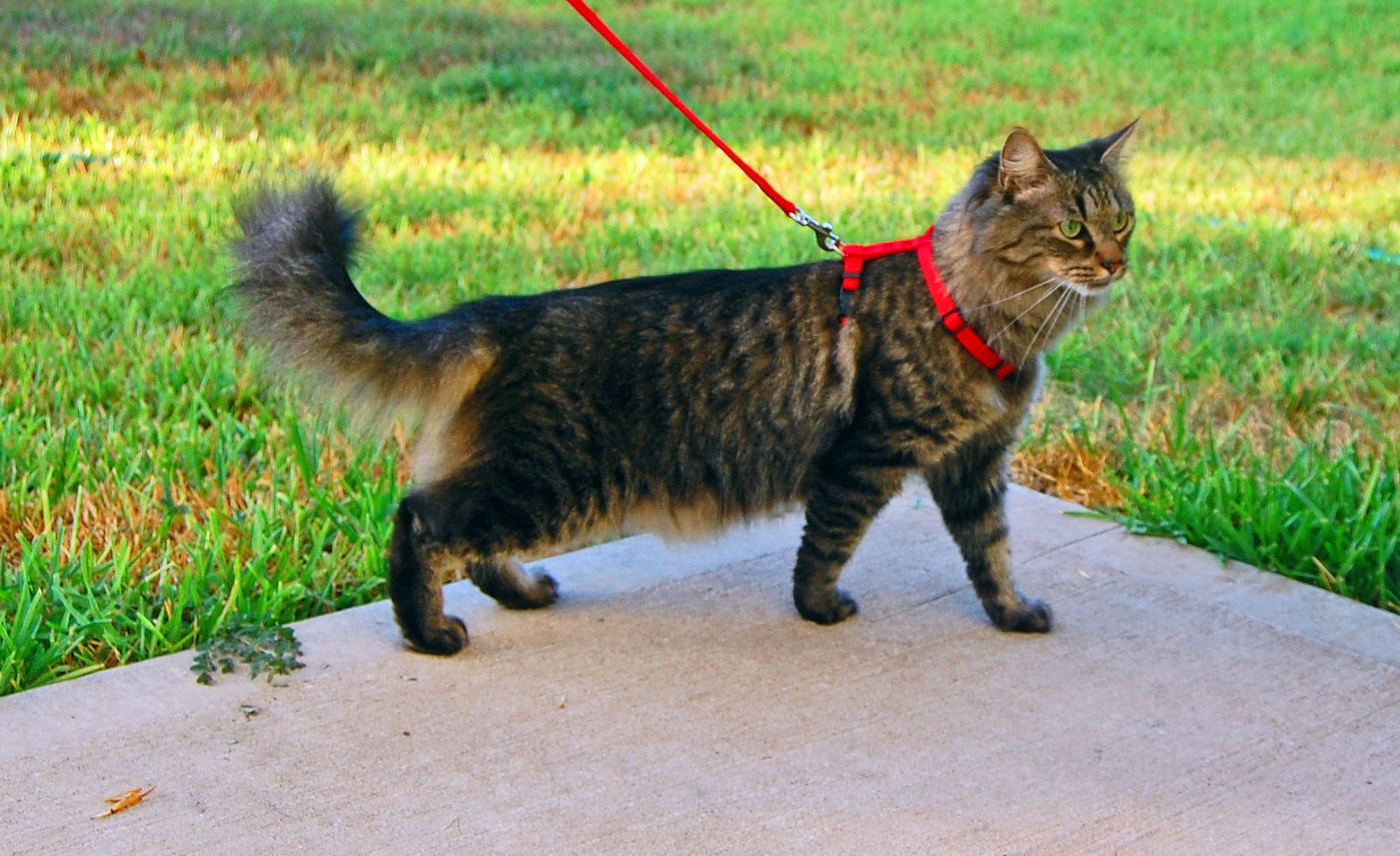
21. Cats spend two-thirds of their lives in slumber
A defining feature of domestic cats is their seemingly endless appetite for sleep. They abide by a simple mantra: eat, sleep, play, and repeat! Surprisingly, these feline connoisseurs of leisure devote nearly two-thirds of their day to slumber, equivalent to a staggering average of fifteen hours daily. With a resolute commitment to relaxation, they dedicate up to 70 percent of their lives to blissful snoozing. Alongside opossums and bats, our feline companions emerge as one of the animal kingdom’s most accomplished nappers. As experts suggest, they often gravitate towards indulging in slumber on chilly or rainy days, a habit they might have inherited from their human counterparts.
22. Feline Fascination with Flowing Water
Intriguingly, cats often display a liking for dipping their tongues in water or raising their lips to drink from rain. My cat used to position his head under a bathtub faucet, savoring the water as it gently cascaded onto his tongue. Cats exhibit a preference for flowing water over stagnant water, a phenomenon that has sparked curiosity and spawned an industry of cat fountains. The reasons behind this preference remain an intriguing topic that continues to captivate pet owners and veterinarians alike.
Regardless of the material—plastic, ceramic, or other—a cat fountain requires regular maintenance. To nurture their well-being, keep the fountain filled and clean it thoroughly on a regular basis, ensuring that your feline friend always has access to fresh and enticing water.
- Buy Cat Accessories on Amazon
- The Complete Guide to Adopting a Cat: Preparing for, Selecting, Raising, Training, and Loving Your New Adopted Cat or Kitten
- Amazon Best Sellers: Best Cat Training
- Cat Grooming Supplies on Amazon
23. A Cat’s Purr Unveiled
For cat lovers, waking up to the soothing serenade of a cat’s purr is an unrivaled delight. Purring serves as a multifaceted form of communication, conveying happiness and contentment while also indicating stress and fear. Recent studies, however, unveil the intriguing possibility that purring may hold the key to self-healing. Researchers have discovered that a cat’s purr resonates at a frequency ranging from 25 to 150 Hz, fostering tissue regeneration and facilitating the repair of bones. Thus, basking in the gentle melody of a purring cat serves as a delightful and potentially therapeutic experience.
24. Navigating the World with Precision
Cat whiskers are no ordinary hair follicles; rather, they function akin to antennae possessed by insects, providing felines with an unparalleled sensory experience. Referred to as vibrissae, cat whiskers serve as an integral part of their muscular and nervous system, contributing to vision enhancement and facilitating their daily activities. With their whiskers as guides, cats navigate their environments with unparalleled precision, lending credence to their legendary 4 a.m. foot attacks. Vital cat fact for every owner: Abstain from trimming a cat’s whiskers, as such an act could induce bewilderment and terror within your feline friend.

25. Cats and Their Olfactory Marvels
In the realm of olfaction, cats reign supreme, their sense of smell is approximately 14 times more potent than that of an average human. Armed with an astounding arsenal of over 200 million olfactory receptors, our furry companions navigate the world through their remarkable noses, identifying individuals and objects with unparalleled accuracy. Although their olfactory prowess is remarkable, it pales in comparison to the scent identification prowess displayed by their canine counterparts.
Bonus cat fact: Cats revel in the scent of Chlorine.
26. Cats Enduring Breakouts
Much like their human companions, cats, too, grapple with the vexing issue of acne. Feline acne predominantly manifests around the chin or mouth region. These pesky blemishes, resembling blackheads or whiteheads found on humans, are particularly prevalent in cats with long hair or folds of skin. Although most cases of feline acne remain mild, severe instances may lead to hair loss and noticeable swelling, warranting attention and care from vigilant pet owners.
- Best buys on Amazon today
- Best buys on Amazon today for men
- Best buys on Amazon today for women
- Best buys on Amazon today outdoor utility cart
- Best buys on Amazon today for kids
- Amazon best buys for home
27. Graceful Agility: The Cat’s Unique Gait
The extraordinary agility and flexibility of cats stem from a combination of factors. Unlike humans, whose ligaments hold their vertebrae together, cats rely on their muscles for this purpose, granting them a remarkable range of motion. A cat’s shoulder joint is designed to allow a foreleg to rotate in nearly any direction, contributing to its graceful movements.
Have you ever noticed a peculiar characteristic of a cat’s gait? Unlike most other mammals, which move their front and back legs on opposite sides of their bodies, cats move both their front and back legs on the same side of the body. This results in a distinctive sequence of movements: front left, a slight pause, back left, front right, another pause, and back right. This gait is akin to the ones seen in camels and giraffes, which also possess intriguing locomotion.
28. A tale of feline leadership in an Alaskan town
Can felines vie for mayoral positions? The answer is an intriguing yes! Enter Stubbs, an affable orange Tabby cat, who astoundingly held the prestigious title of mayor in the historic Alaskan town of Talkeetna for a remarkable 20 years.
Elected through a write-in campaign in 1998, Stubbs navigated the political arena with charm and poise, even surviving an audacious assassination attempt by a wild dog during his illustrious tenure. On July 21, 2017, Mayor Stubbs, having achieved legendary status in Talkeetna, bid farewell, leaving behind a legacy of exceptional leadership that might have extended even to the Presidential Election race.

More Things we learn from a Cat
29. Embrace Unwavering Determination
When a cat sets its sights on something, there’s no swaying its unwavering determination. Whether stealthily stalking a spider across the room or eyeing your plate of succulent chicken breasts, altering a cat’s intentions seems an insurmountable feat. Adopting this feline-like focus could revolutionize our lives amid the distractions of our human existence. Devoting our energies to a single purpose may lead to remarkable achievements and progress in both our personal and professional endeavors.
30. Embrace Spontaneity and Self-Care
Cats exhibit spontaneity in their actions. They follow their instincts and desires without concerning themselves with societal expectations. If they want to nap, they nap. Basking in the warmth of the sun? They do it unapologetically. Let us liberate ourselves from the confines of what we “should” be doing and embrace spontaneity. Taking care of our well-being and indulging in simple pleasures is essential for a fulfilled life.
31. Be Nimble in an Ever-Changing World
Cats effortlessly navigate through situations with agility, a skill that serves them well. Human life mirrors this need for adaptability and resilience. In today’s rapidly evolving world, we must be proactive, flexible, and responsive. Amidst the inundation of information and incessant activity, nimbleness enables us to seize opportunities and gracefully sidestep obstacles.
- How Discipline and Consistency Will Set You
- Management Skills & leadership development course
- Hardcover books on Japanese medicine
- How to Overcome Pride
- How to overcome evil
- How to overcome anxiety
- How to overcome worry
- How to overcome fear
- How to overcome social anxiety
- How to overcome rejection
- How to overcome narcissism
- How to overcome depression
- How to overcome dyslexia
- Push Yourself Out of Your Comfort Zone
- Inspirational books on Amazon
- Books to improve mental health
32. Aim for Heights Unimagined
Cats possess an astounding ability to effortlessly leap to seemingly impossible heights. They demonstrate a methodical approach, first analyzing their target, then calculating the distance and landing area, and finally, with unwavering focus, they soar. Witnessing these graceful leaps might leave us wondering if they could have aimed even higher. Inspired by these feline acrobats, let us learn to set ambitious goals. By daring to aim high, we may discover our capabilities extend beyond our expectations. And if, perchance, we miss the mark, we’ll be equipped to land on our feet, ready to persist and learn from our endeavors.
33. Acknowledge and Treasure Our Caretakers
Cats are astute in recognizing those who provide for them. The individuals who feed, care, and love them garner special regard, reaping the rewards of affection, headbutts, or serene companionship. Yet, as humans, we often take our nurturers for granted. Emulating our feline friends, let us cherish and appreciate those who love and care for us. Gratitude should flow freely toward those who nourish and support us throughout our journey.
34. Attune Your Senses: Listen and Learn
Ever-alert, cats remain attuned to their surroundings. When they pause and fix their gaze into the distance, they’re attuned to sounds and subtle vibrations. Even while napping, their ears twitch and swivel, ever-aware of their environment. Mimicking the feline acuity, let us cultivate our ability to listen intently. Important and meaningful conversations are happening all around us. Instead of monopolizing the conversation, pause and listen. Let us free ourselves from the incessant distractions of technology, and instead, observe and embrace the world unfolding around us.
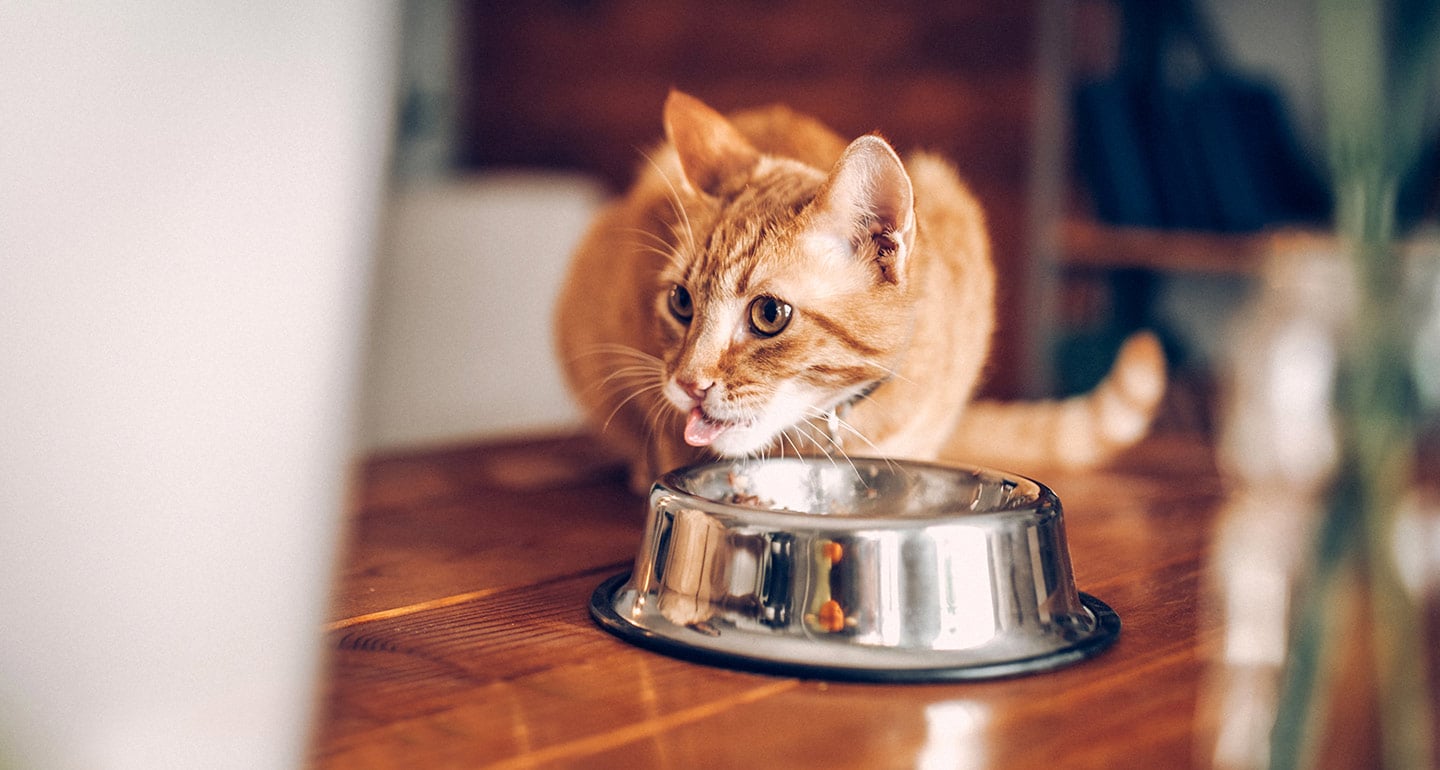
Final thought
Cats’ multifaceted and intriguing nature extends to their fascination with music, nutritional needs, and graceful movements. Their individuality and preferences continue to astonish and charm us, as we seek to unravel the mysteries of these enchanting creatures.
Possess a captivating and multifaceted nature that challenges common stereotypes. Their social tendencies, increasing lifespans, emotional connections, and trainability all contribute to the allure and mystery surrounding these enigmatic creatures. Keep learning from your experience. There will be a lot of new situations you might have faced while nurturing your cat. Buy your required pet stuff, toys, and food.
More Interesting Articles
- How to Train A Cat to Walk On a Leash in A Month
- How to Train Your Cat to Use the Toilet in 12 Weeks
- How to Train a Kitten to Use a Litter Box in a Month
- Caring for Newborn Kittens and Mother at Home
